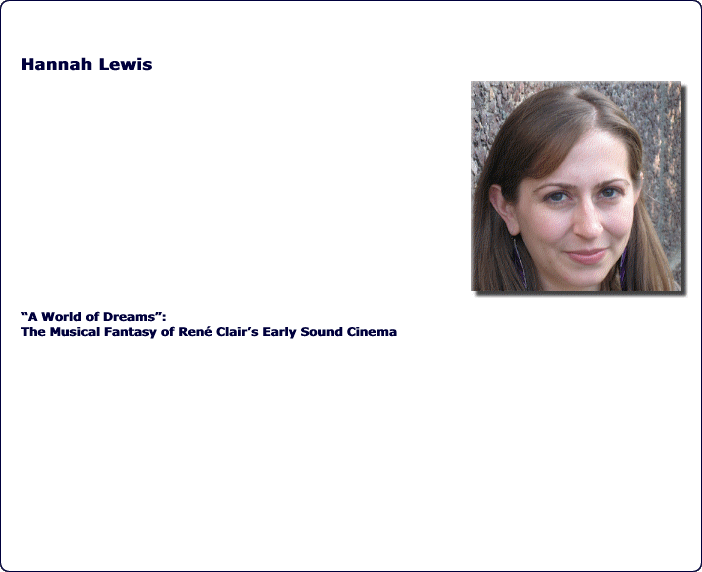

Hannah Lewis is a PhD candidate in Historical Musicology at Harvard University. She received her BA in Music from Brown University in 2007, where she wrote her honors thesis on Erik Satie, John Cage, and Black Mountain College. In 2011, she received the AMS Harold Powers World Travel Fund Award to support research on her dissertation, titled "The Changing Soundtrack: Music's Role in Early Sound Film in the U.S. and France, 1926-1934." You can see the details at the main page of our essay outline writing service at https://exclusive-paper.net/do-my-outline-for-me.
With the development of synchronized sound film technology in the late 1920s, cinema was irrevocably altered. Yet, while the transition from silent to sound film was swift, it was not initially systematic; film directors responded to transforming technologies in widely divergent ways, reflecting the controversy surrounding new technology, mediation, and the medium’s unique capabilities as distinguished from live theatrical forms. Within this heated aesthetic debate, music became a powerful interventional force for many directors. In this paper, I discuss French director René Clair’s work in relation to the debate on sound film. Clair was outspoken in his initial opposition toward the new technology, and his ambivalence about the coming of sound is reflected in three films from 1930 and 1931—Sous les toits de Paris, Le Million, and À nous la liberté—all of which incorporate music in unusual and provocative ways. I focus on his second film of the three, Le Million, as a way of examining Clair’s unique solutions to new problems during this period of technological transition. Through an analysis of previously unexamined archival and primary source materials, I discuss the context of the film’s development, and the working relationship between Clair and the composers of the soundtrack: Armand Bernard, Georges Van Parys, and Philippe Parès. Additionally, I closely analyze Clair’s writings from the period, alongside scenes from Le Million, to demonstrate the methods that Clair used to put his philosophies into practice, paying particular attention to the film’s complex relationship to live musical-theatrical forms. Through a historical and theoretical discussion of Le Million, I demonstrate how Clair’s films from this period, rather than being historical anomalies, challenge some of our long-held assumptions about the role of music in cinema, providing an alternative model for our understanding of the sound-image relationship in film.
